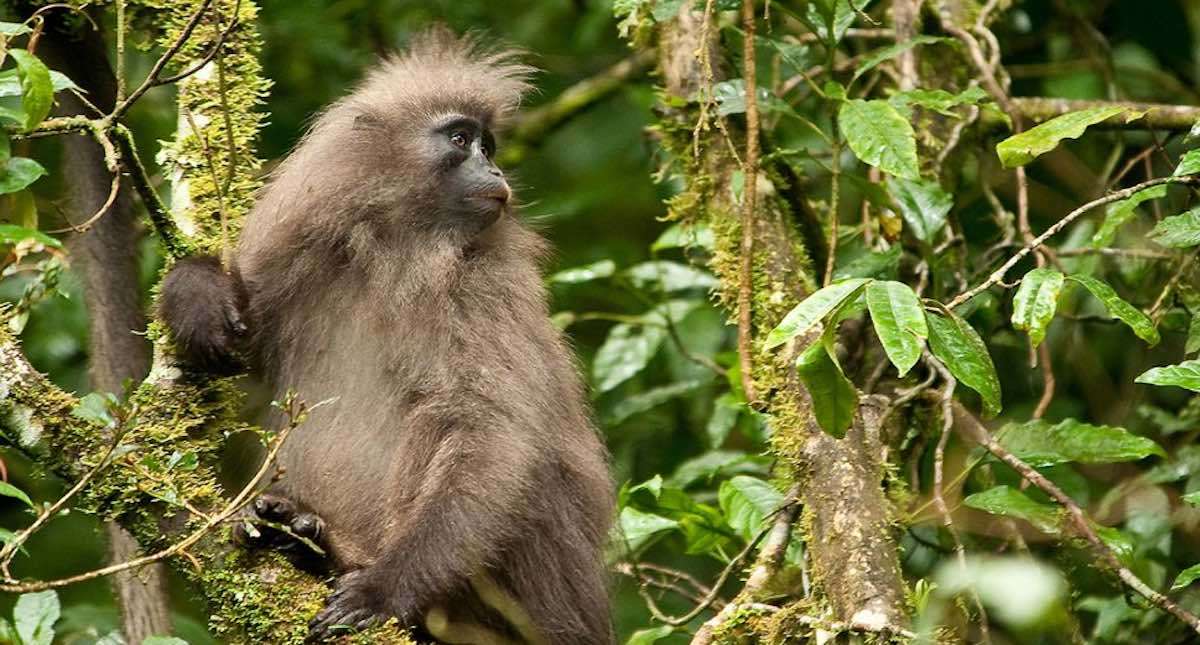Man Whose Dog Ran Away While He Was in a Coma Is Reunited Thanks to Strangers on Internet
Waking up from a coma, a man was devastated when he learned his dog had gotten lost, but a local dog rescue organizer stepped up to help.

Discovering a whole new species is an exciting moment for scientists; when they determined it was Critically-Endangered it probably induced the opposite reaction.
The kipunji was only identified in 2003 living on the slopes and forests of Mt. Rungwe and Livingstone Mountains within Kitulo National Park in Tanzania, after locals gave scientists the news that there were monkeys there.
Twenty years later and this monkey of gentle visage has been the beneficiary of ‘holistic' conservation undertaken by the talented scientists at the Wildlife Conservation Society. By "sandwiching" hard science on top of protected area management and local community outreach, the kipunji monkey population has increased 65% from when it was first discovered by Westerners.
"Our new survey in 2020-just published in the International Journal of Primatology-shows… illegal activities have fallen in Mount Rungwe and Livingstone/Kitulo forests by 81%, with a total reduction in illegal timber activity of 90%," writes Tim Davenport on the WCS blog.
Mongabay recounts that the southern highlands of Tanzania were poorly charted or surveyed before WCS began working there in 1999. Lacking the big game of the Serengeti, it had been ignored by Western scientists.
However the biodiversity is outstanding, and several species have been named after Mount Rungwe, including the kipunji which was characterized as one of the 25 most-endangered primates on Earth.
Ranging from black to a multi-coloration like karst rock, the monkeys aren't very large. They have small black faces and large triangular crests of hair like a pompadour.
There are "good reasons to be optimistic" about the kipunji, as the Tanzanian government quickly established nature reserves in all the areas of the kipunji's habit that weren't already protected, and the WCS built up long-term monitoring programs to ensure any change, positive or negative, is noticed.
As is often the case now in Africa, locals are being incentivized away from cutting down trees for charcoal with beekeeping. Beekeeping is becoming an excellent way for rural communities to earn a living that doesn't involve poaching or deforestation.
Without the need to sell firewood, lumber, and charcoal for money, locals can leave much more of the forest alone.
"You're permanently looking for the end game. And there are now opportunities, there are people doing tourism, both the Tanzania Forestry Service [and] Tanzania National Parks is doing good stuff," Davenport told Mongabay.
"It's not perfect by any means. There are still pressures, there are still, just as anywhere in the world, illegal activities. There is still poverty around the edge. But it's in a considerably better place than it used to be."
SHARE The Good News About This Little Mountaineer With Your Friends…
Be the first to comment